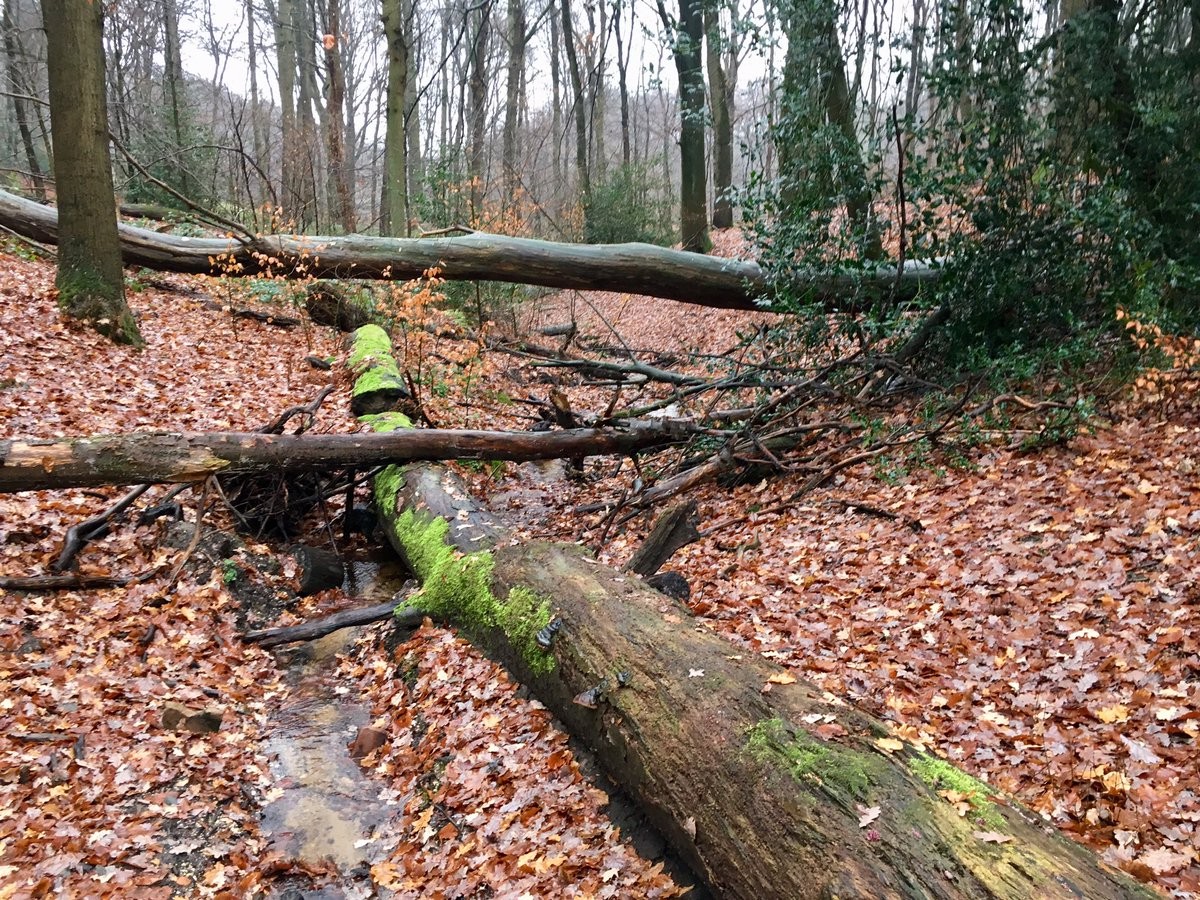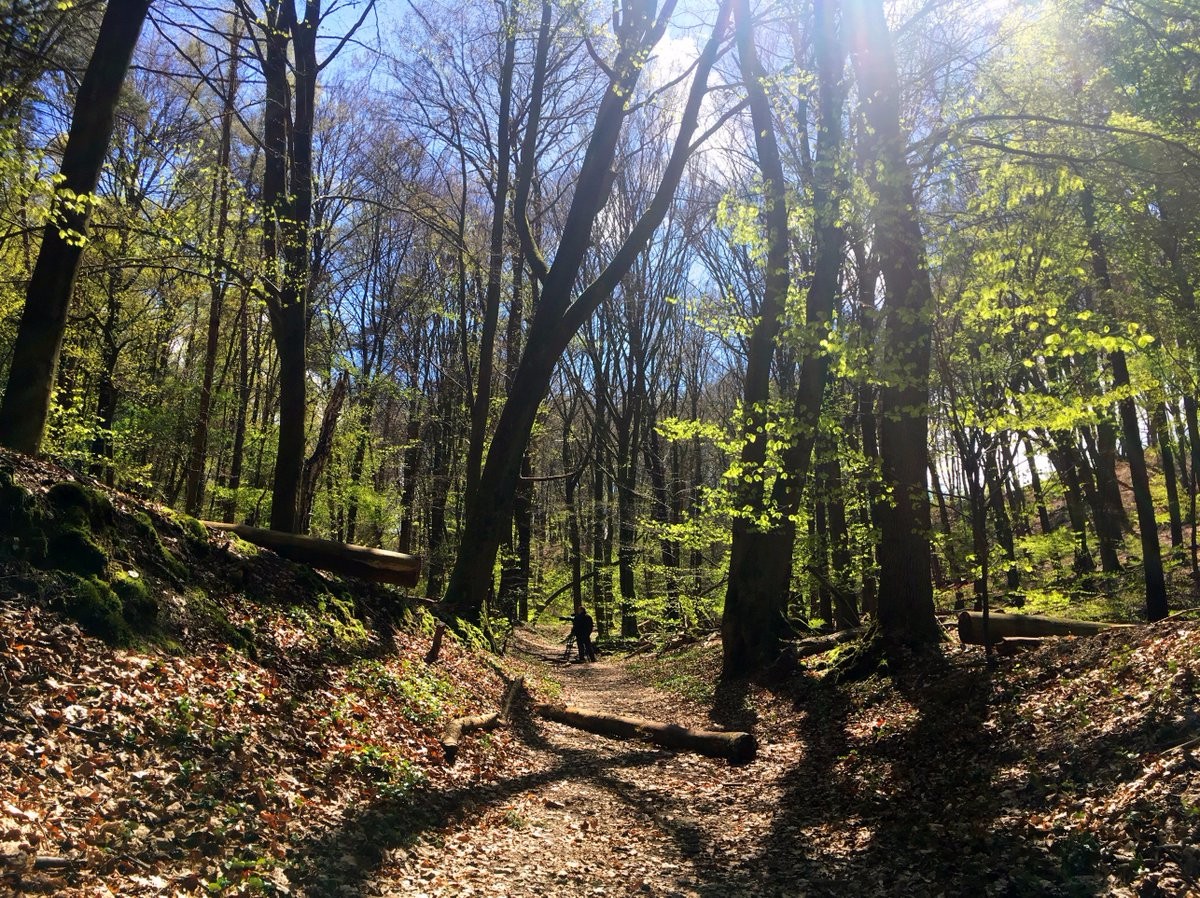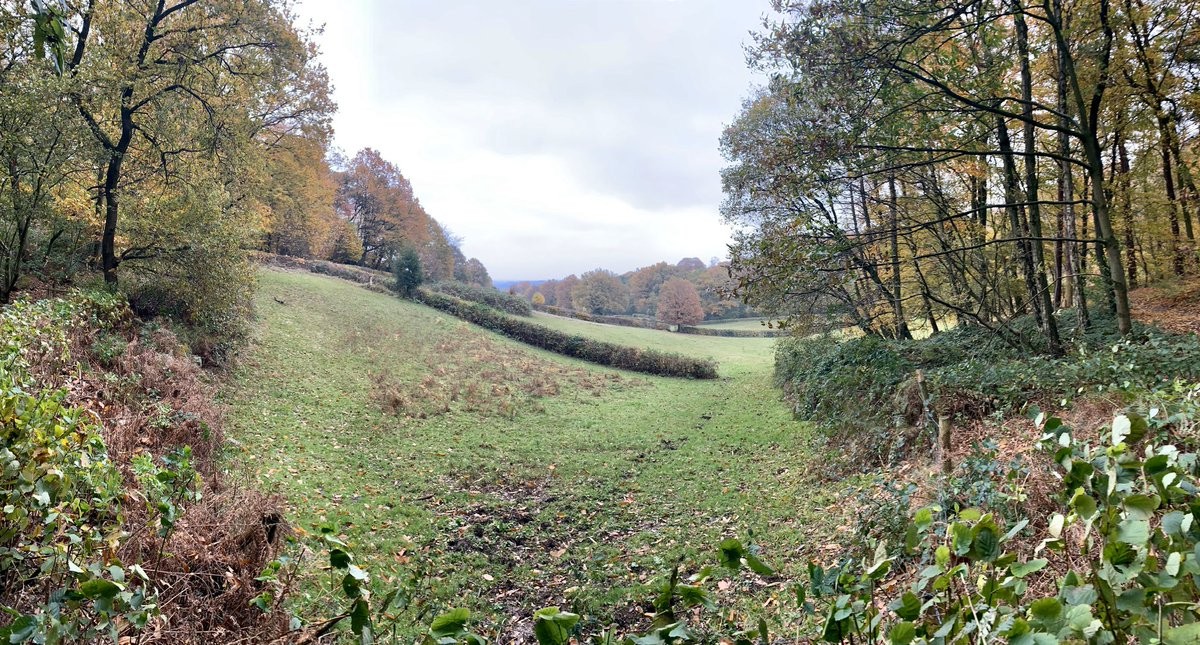Charger images
Les formats d'image autorisés sont de type jpeg, png ou gif
La taille maximale du fichier doit être de 20MB



De Duivelsberg (Devils Mountain) is a hill on the moraine east of Nijmegen. The reserve consists of forests and small streams meandering through the valleys.
The nature reserve Duivelsberg and other hills lies on a moraine. The hills are covered with forest with beech, oak and other trees. In between are small meadows and crop fields. In the valleys are mall brooks, in spring you can find along the brooks wood anemone and oxlip.
The hilly forests are the main atraction, as the forest is quit old many birds breed here. Pic noir, Pic épeichette, Pic mar, Pic épeiche and Pic vert all breed. In winter and early spring you can hear Chouette hulotte. During an early morning walk in spring and early summer you can see Roitelet triple-bandeau, Roitelet huppé, Mésange huppée, Mésange nonnette, Bouvreuil pivoine, Gros-bec casse-noyaux, Bondrée apivore, Buse variable, Autour des palombes, Épervier d'Europe, Pouillot siffleur and Gobemouche noir. In the eastern part there is a breeding colony of Héron cendré. Grand-duc d'Europe has been seen and heard in the area.
_________________________
Nederlands: De Duivelsberg is een heuvel op de stuwwal ten oosten van Nijmegen. Het natuurgebied bestaat uit bossen en kleine beekjes die door de dalen kronkelen. De heuvels zijn bedekt met bos met beuken, eiken en andere bomen. Daartussen liggen kleine weilanden en akkers. In de valleien liggen kleine beekjes, in het voorjaar vind je langs de beekjes bosanemoon en slanke sleutelbloem.
Omdat het bos vrij oud is broeden hier veel vogels. Pic noir, Pic épeichette, Pic mar, Pic épeiche en Pic vert broeden er allemaal. In de winter en het vroege voorjaar hoor je de Chouette hulotte. Tijdens een vroege ochtendwandeling in het voorjaar en de vroege zomer kun je Roitelet triple-bandeau, Roitelet huppé, Mésange huppée, Mésange nonnette, Bouvreuil pivoine, Gros-bec casse-noyaux, Bondrée apivore, Buse variable, Autour des palombes, Épervier d'Europe, Pouillot siffleur en Gobemouche noir zien. In het oostelijke deel bevindt zich een broedkolonie van Héron cendré. Grand-duc d'Europe is gezien en gehoord in de omgeving.
The best place to start your walk is at restaurant De Duivelsberg. Parking is possible next to the restaurant and at the end of your walk you can finish here with a pancake or a glass of cold beer on the terrace... The area is only accessible on foot, some hills are steep and some hills have stairs to go up or down.
_________________________
Nederlands: De beste plek om je wandeling te starten is bij restaurant De Duivelsberg. Parkeren kan naast het restaurant en aan het einde van je wandeling kun je hier afsluiten met een pannenkoek of een glas koud bier op het terras... Het gebied is alleen te voet bereikbaar, sommige heuvels zijn steil en sommige heuvels hebben trappen om op of af te gaan.
Votre feedback sera transmis à l’auteur.rice de cette zone et à l’équipe éditoriale de Birdingplaces, qui l’utiliseront pour améliorer la qualité des informations. (Vous souhaitez publier un commentaire visible en bas de page ? Fermez cette fenêtre et choisissez l’Option 1 : « Publier un commentaire, un conseil ou une observation ».)
Veuillez fournir des suggestions d'améliorations ou d'ajouts au texte de ce site ornithologique.
Veuillez fournir vos suggestions d'améliorations ou d'ajouts à la carte.
Veuillez fournir des suggestions d'améliorations ou d'ajouts à la liste des oiseaux.
Cliquez sur l'icône de l'oiseau () Insérez les noms d'oiseau dans votre langue. Ils seront automatiquement traduits pour les autres usagers !